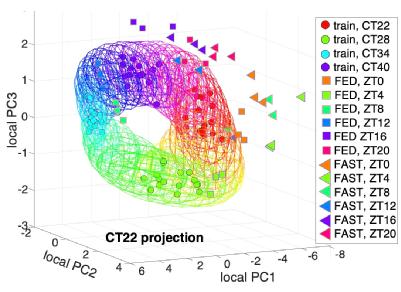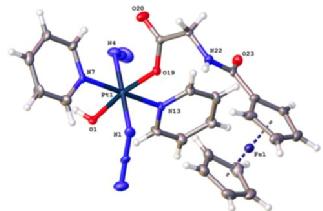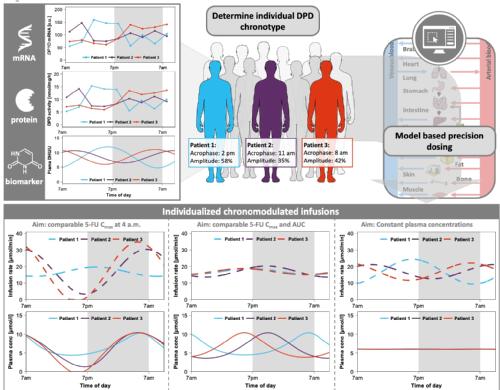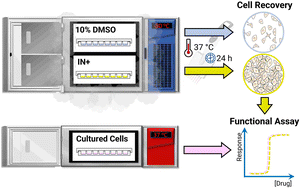Publications
A complete up-to-date list of publications of Robert can be found on Google Scholar and full-texts might be available from the Warwick Research Active Portal (WRAP).
TafkaTT: The algorithm first known as TimeTeller - now out in PLoS Computational Biology
 |
Very long time in the making and already online as a preprint, now finally out as peer-reviewed paper with contributions from 2 MRC DTP students from the lab (Laura Usselmann and Vadim Vasilyev) and in collaboration with David Rand as well as Sascha Ott, Francis Lévi and George Bjarnasson. |
Tuning the photoactivated anticancer activity of Pt(IV) compounds via distant ferrocene conjugation
 |
Led by Huayun Shi from the Sadler lab we discover and characterise novel photoactive prodrugs for cancer treatment that offer potential for spatially-selective anti-tumour activity with minimal effects on normal tissues.Photoactive metal complexes in particular, have a rich and relatively unexplored photochemistry, especially an ability to undergo facile intersystem crossing and populate triplet states. Here, the photoactive octahedral Pt(IV) complex trans,trans,trans-[Pt(N3)2(OH)2(py)2] was conjugated to ferrocene to introduce novel features into a candidate photochemotherapeutic drug. Visible light irradiation gives rise to micromolar activity for these compounds in ovarian, lung, prostate and bladder cancer cells |
5-FU PKPD model suggest patient chronotypes!

Lead by the Thorsten Lehr's PKPD group at the University of Saarland, this paper is taking a treasure trove of patient 5-FU PK data amalgamated with DPD activity data from health people to establish a novel PKPD model of 5-FU that captures the extent of diurnal variations in DPD activity and can help investigate individualized chronomodulated 5-FU therapy through testing alternative personalized dosing strategies. This work is based on the the discovery of diurnal variations impacting cancer therapy. Especially, use of chronomodulated treatment with 5-fluorouracil (5-FU) has gained significance. Studies indicate high inter-individual variability in diurnal variations in dihydropyrimidine dehydrogenase (DPD) activity – a key enzyme for 5-FU metabolism. However, the influence of individual chronotypes on chronomodulated therapy was unclear but is needed to optimize precision dosing of chronomodulated 5‑FU.
Adenosine Kinase regulates Sleep Timing and the Homeostatic Sleep Response through Distinct Molecular Pathways
A follow up on the actions of adenosine kinase in collaboration with Aarti Jagannath's group.
Sleep behaviour is broadly regulated by two drives, the circadian (Process C), which is orchestrated by the suprachiasmatic nuclei (SCN), and controls sleep timing, and the homeostatic (Process S), which controls sleep amount and the response to sleep deprivation (Borbély et al., 2016). However, the molecular pathways that mediate their independent effects, and their interactions remain unclear. Adenosine is an important integrator of both processes (Bjorness & Greene, 2009; Jagannath et al., 2021, 2022), such that adenosine levels track and modulate wakefulness, whilst adenosine signalling inhibits the circadian response to light. Therefore, we studied the sleep/circadian behaviour, and cortical and SCN transcriptomic profiles of a mouse model overexpressing Adenosine Kinase (Adk-Tg) (Fedele et al., 2005), (Palchykova et al., 2010). We found that overall, the Adk-Tg mouse slept less and showed lower amplitude circadian rhythms with an altered sleep/wake distribution across the 24h day, which correlated with changes in transcription of synaptic signalling genes that would shift the excitatory/inhibitory balance. In addition, the Adk-Tg mouse showed a reduced level of ERK phosphorylation, and attenuation of DNA repair related pathways. After sleep deprivation, however, the Adk-Tg mouse significantly increased relative to wildtype, immediate early gene expression levels including of Arc, but paradoxically reduced ERK phosphorylation. Thus, baseline sleep levels and timing are regulated by ERK signalling, whereas the response to sleep loss is mediated by the alteration of the transcriptomic landscape independently of ERK.
How to unfreeze liver cells without killing them (just to later kill them with drugs)?
This is a real issue in drug screening, especially high throughput assays are suffering from low viability after thawing of cells, and associate labour-intensive remidies. To address this, we helped the Gibson Group to show off their impressive anti-freeze technique in a paper entitled: "Cryopreservation of Assay-Ready Hepatocyte Monolayers by Chemically-Induced Ice Nucleation: Preservation of Hepatic Function and Hepatotoxicity Screening Capabilities"
Being able to recover many HepG2 cells as well as primary hepotocytes as we demonstrate in this paper is a step in the direction to make this process more efficient and reducing variation!

